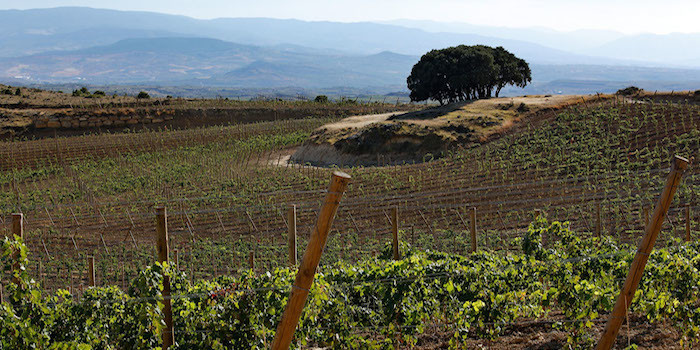There’s a lot to like about Spanish wine: the category offers exceptional value and a wealth of native grapes.
Spain first earned the attention of American wine drinkers in the 80s and 90s on the strength of its bargain reds and sparklers. Today’s wine drinkers are just as likely to be splurging on premium Albariños and Tempranillos as they are snapping up affordable Cavas and Garnachas, but Spain continues to excel at what matters most to consumers and retailers in every tier: price-to-quality ratio.
“You can’t beat Spain for value,” says Dennis Kohl, the beverage consultant for Trig’s Cellar 70, located within the stores of an upscale Wisconsin grocery group. “That was true when I first joined the company 22 years ago and it’s still true today.” However, what he’s selling has definitely changed from decades past. While early entries like Rioja, Ribera del Duero and Cava still lead the pack, their momentum is shifting upscale and diversifying in style.
National figures verify these trends. “Exports of Rioja to the U.S. have doubled since 2009,” says Rioja’s trade director for North America Ana Fabiano. “The most dramatic gains have been in the Reserva category, which represents 28% of YTD shipments – twice its 2010 market share. Rioja Rosado is also up 30% so far in 2015.”
While many other exporting countries that came on strong in the late 20th century have since flattened or fallen from fashion, wines from Spain have remained on the cutting edge. “People haven’t gotten bored with Spain because there’s always something new to try, something unique that can’t be found elsewhere.” according to retailer TJ Douglas, owner of Boston’s Urban Grape.

Rethinking Spanish Wine
“Spain is just as strong in high-quality table wines as it is in specialties like sparkling and fortified wines,” explains Will Willis, global brand ambassador for Ferrer Family Wines, part of the Freixenet Group. “The entire spectrum is available, in every color and style, from climates that range from cooler Atlantic areas to warmer Mediterranean zones.”
For example, white wine was not originally among Spain’s strengths in the U.S. market, but the explosion of interest in Spanish white wines like Albariño and Verdejo has helped position Spain as a global wine leader rather than a one-hit wonder.
 From near obscurity twenty years ago, Albariño has now joined the ranks of the world’s top white wines. Exports of Rías Baixas wines to the U.S. have grown seven-fold since 2001, and account for 45% of the region’s exports, while exports from Rueda have tripled over the same period. Big players in the trade are also looking upmarket and beyond Spain’s classic regions as they plan for the future.
From near obscurity twenty years ago, Albariño has now joined the ranks of the world’s top white wines. Exports of Rías Baixas wines to the U.S. have grown seven-fold since 2001, and account for 45% of the region’s exports, while exports from Rueda have tripled over the same period. Big players in the trade are also looking upmarket and beyond Spain’s classic regions as they plan for the future.
It’s telling that in August, the Stoli Group chose Manuel Louzada, the former estate manager of Toro icon Bodega Numanthia, to serve as CEO of its new luxury wine group and that its first Spanish acquisition was from well off the beaten track. Arinzano, located within the DO region of Navarra, is the first single-estate Vino de Pago to be established in northern Spain.
Another factor sustaining Spain’s resilient market share is shifting American demographics. “Spain appeals to younger consumers seeking new wine regions to explore,” explains Javier Pages, the global CEO of Codorníu-Raventos, “while continuing to satisfy more mature palates that have already been richly rewarded by Spanish wine trial and discovery.”
And, age is not the sole factor. Spanish is a first or second language for a growing number of wine consumers in some of the largest wine markets – not just Miami and Los Angeles, but also in places like New York, Houston, Chicago and Boston.
Some wine companies are responding by rethinking the traditional Old World / New World division on which the trade has been organized.
The Winebow Group formed MundoVino in summer 2015, a separate import portfolio that groups its wines from Spain with those of Argentina, Chile, Portugal and Brazil. Why? “Spain’s history and culture are more strongly linked to these nations than to Italy, France or Germany,” says Frank Paredes, MundoVino’s vice president for portfolio management. “Marketing these wines collectively is the logical step to drive growth. Retailers across the United States would be wise to group these five nations together.”





[…] The Reign of Spain […]